Related Content
Content

Britain by Steam Train
How to take a train to a steam railway, plus the special steam trains which travel on the national rail network
Share
Britain is fabulously adorned with preserved steam railways on formerly closed lines, lovingly restored and maintained by legions of volunteers.
SMTJ’s idea of an ultimate day trip is to take a contemporary train to a junction station shared with these delightful railways, so that an onward rail journey to a lovely destination is completed behind a steam engine.
It’s why such days out are included on these location ideas for a British holiday by train.
Hence the railways featured below have been singled out because they can be easily accessed by train; glorious Keighley is one example of where a contemporary station and a preserved station are adjacent to each other.
There are also more opportunities than anywhere else in the western hemisphere to take a long-distance journey by steam trains on the national railway network, on the routes that the magnificent engines travelled in their heyday.
Plan a visit:
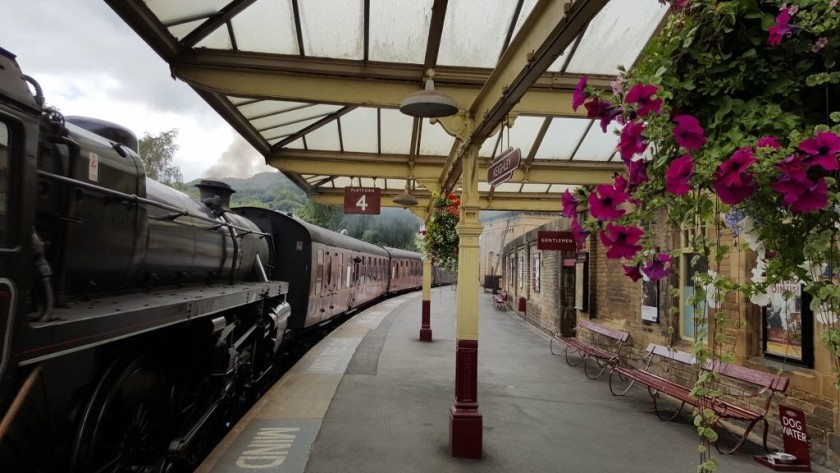
What all these railways featured have in common is that they host a series of special events throughout the year, these can include:
- Gala weekends when additional steam engines come to visit and extra trains are added to the timetable,
- World War II weekends with the stations, staff and some of the travelers are dressed to appear as they would have done in 1939-45.
- Transport fairs when other vintage vehicles including cars and buses visit the stations, and they can be opportunities to ride the buses into the countryside.
Most of the railways also offer dining trains which can offer travellers experiences including fish-and-chip suppers, afternoon teas, or the opportunity to experience quality meals on board a luxury ‘Pullman’ train.
Also check the timetable links which you'll find on each of the railway's websites, as all of them offer an enhanced service during the summer months with more trains running, particularly at weekends and around national holidays; especially at Christmas time.
The Bluebell Railway
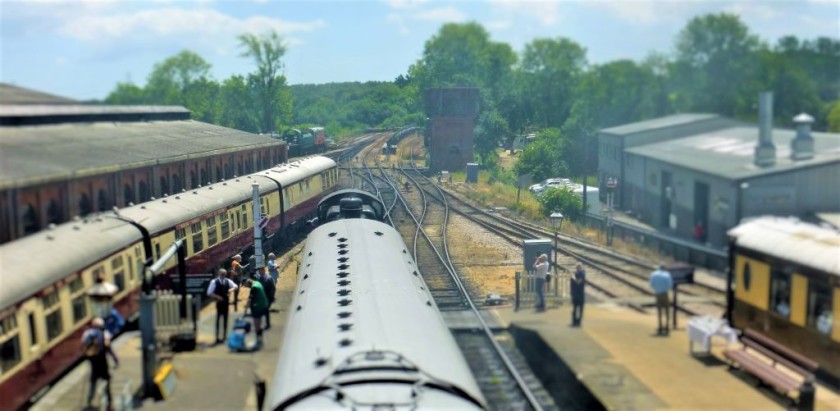
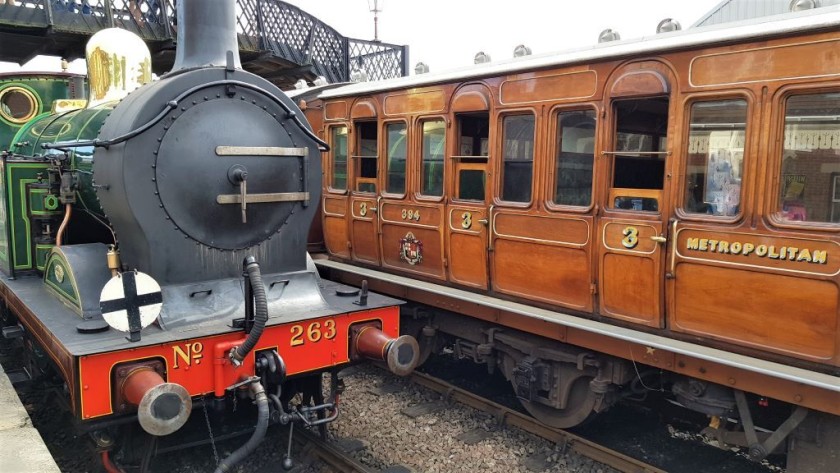
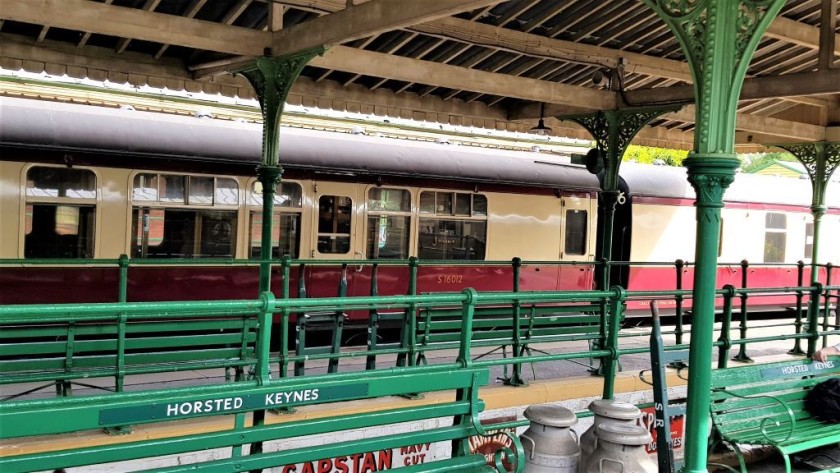

What particularly ticks the boxes about The Bluebell Railway is that it offers those who simply want to ride behind a steam engine between beautifully preserved stations a fabulous experience, but it’s also akin to a working museum, so it also gives its visitors opportunities to get close to the trains.
At Sheffield Park station, its large number of steam engines, which are currently being rested, are parked in an exhibition space - plus there’s also a workshop, where the skills of the restoration volunteers can be viewed and appreciated.
The Bluebell's main station at Horsted Keynes is one of the largest stations on a preserved steam railway, so it’s a superb place in which to imagine how a busy station, with trains coming and going, used to be, helped by its middle of nowhere location, hidden away from contemporary life.
What will also delight those with and without a deep interest in steam railways, is the variety of locomotives which power the trains up and down the line.
Many of Britain’s oldest working steam engines can be found here, along with examples of the engines that worked Britain’s final regular mainline express trains powered by steam.
How to get there by train:
At East Grinstead trains operated by Southern use a station, which is steps away from where The Bluebell Railway trains depart from, you simply come out of the mainline station exit, turn to the right and the ticket office and gate to the steam trains will be ahead of you.
There are one or two trains per hour to East Grinstead which depart from Victoria station daily and the journey time is around an hour.
These trains from Victoria also call at Clapham Junction where connections are available from Waterloo station, Richmond, Windsor, Camden and West Hampstead.
These trains also call at East Croydon where connections are available with Thameslink trains which make multiple stops on the eastern side of central London including St Pancras, Blackfriars and London Bridge.
There are also direct Thameslink trains to East Croydon from destinations to the north of London including Cambridge and St Albans.
On most, but not all, days when the Bluebell Railway is operating, it's possible to obtain 2-for-1 all-day tickets when travelling to and from East Grinstead by train.
The Dartmouth Railway

If your idea of heaven on earth is to ride behind a steam engine along the seashore, then this is where you can make that fantasy a reality.
Swap over the sides of the train when travelling in each direction, because from one side of the railway, you can take in the sea views to the south of Paignton and then on the other side the line, to the north of Kingswear, is the gorgeous River Dart.
The other chief attraction of riding this railway is that Kingswear station is beautifully located and steps away from the station is the ferry pier for the short crossing over to utterly beguiling Dartmouth.
Riding the steam trains and ferry in order to have a Devon cream tea in the town is obviously wonderful, but that is the chief reason for making a visit.
There aren’t any opportunities to get close to the engines and there are no exhibition spaces housing the trains.
How to get there by train:
The railway station in Paignton is shared by The Dartmouth Railway and the 1 or 2 x trains per hour which arrive from Exeter, where they call at both Exeter Central and Exeter St Davids.
The beautiful journey to Paignton takes around 45-50 mins.
These trains also call at Newton Abbot where connections are available with trains to/from Bristol, Cornwall and Pymouth.
East Lancs Railway
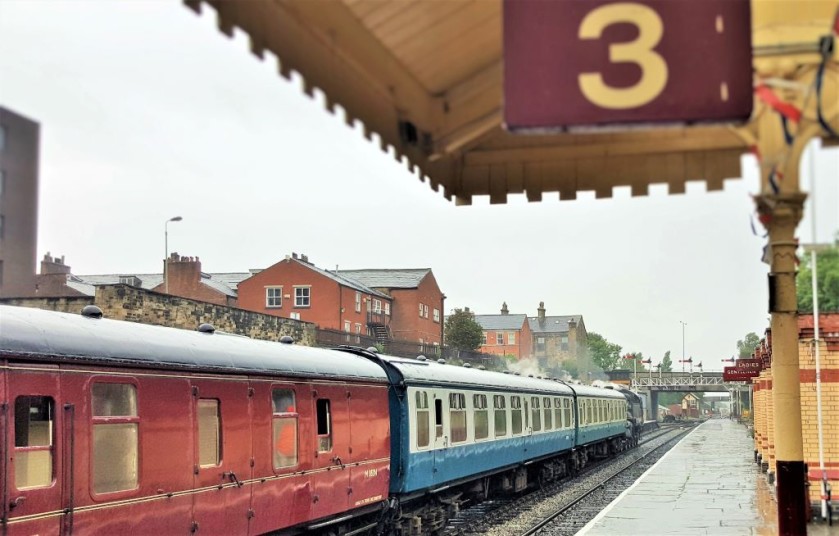
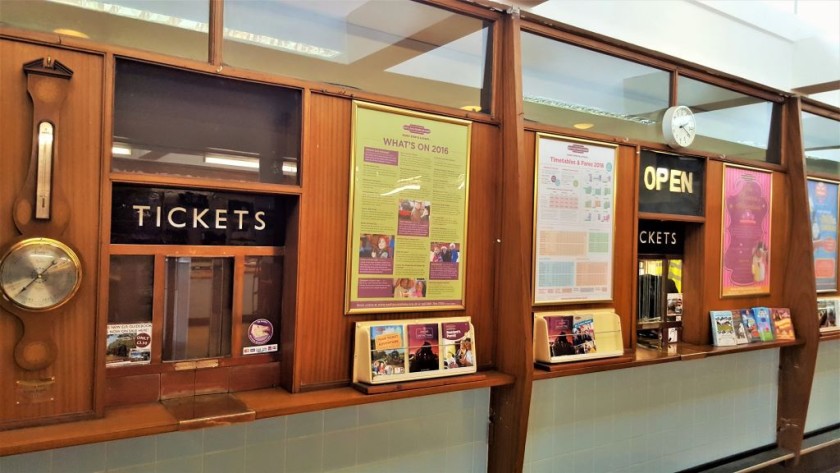
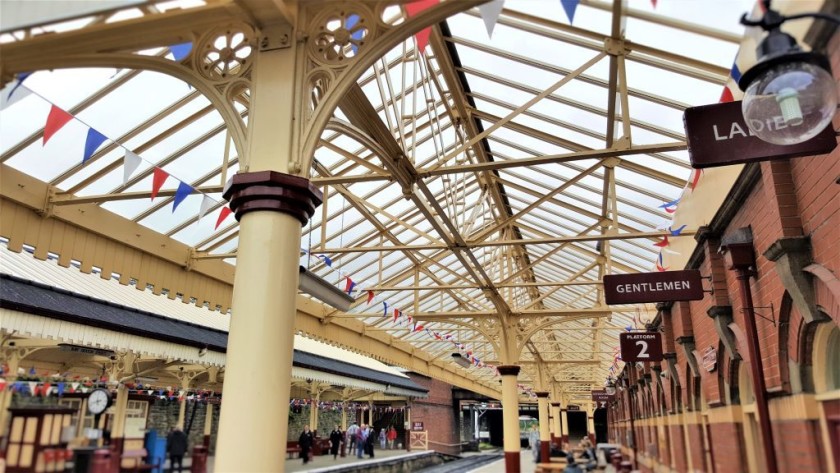
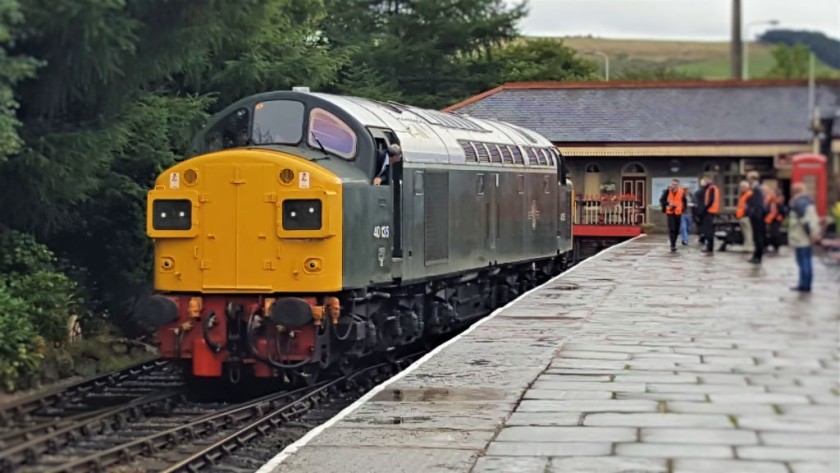
What makes the East Lancashire Railway special is that its immaculate Bolton Street station in Bury is the largest town centre station on a British preserved steam railway.
Ideal for those who want to imagine that they’re heading off for a day out across the countryside in the 1950s.
So the line has exceptionally easy public transport access with trams every 6 –12 mins from central Manchester to a stop that’s a 5 min walk from the station.
(And yes this is a guide to steam railways with easy access by train, but those trams use what was a railway route.)
Though something for steam train fans to be aware of is that majority of the locomotives owned by the East Lancashire Railway are diesel engines, so they haul many of the trains.
How to get there by train and tram:
The tram stop in Bury town centre is a 10 min walk from Bolton Street station.
The trams typically travel to Bury from Manchester Victoria railway station every 6 mins on Monday to Saturday and every 12 mins on Sunday; those daily trams at 12 min intervals commence their journeys at Manchester Piccadilly.
Manchester Victoria has trains from Bradford, Leeds and Liverpool; and Manchester Piccadilly has trains from Birmingham and Sheffield.
Great Central Railway
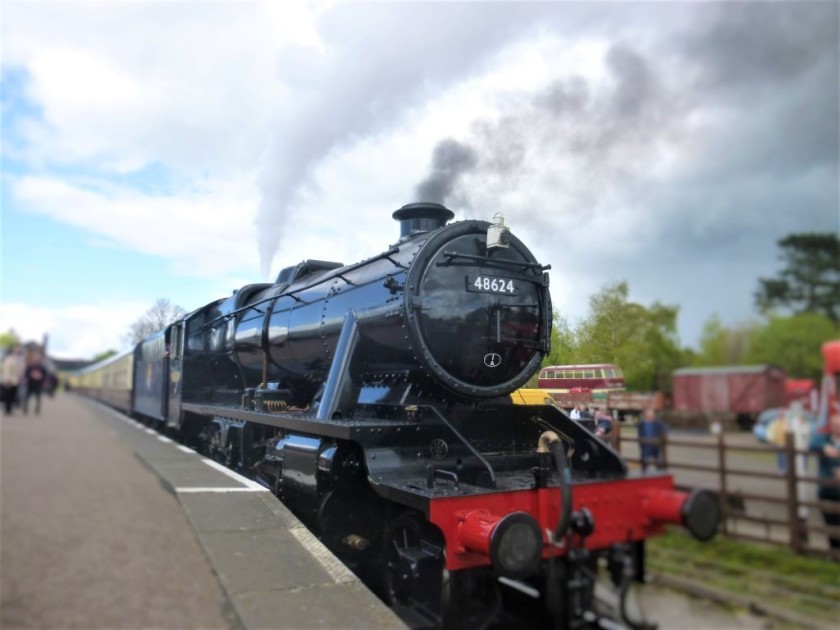
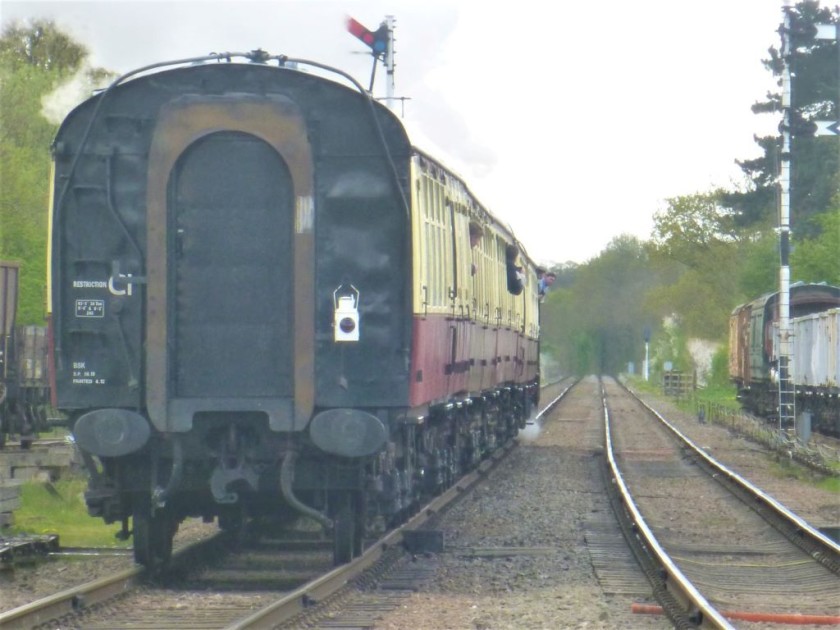
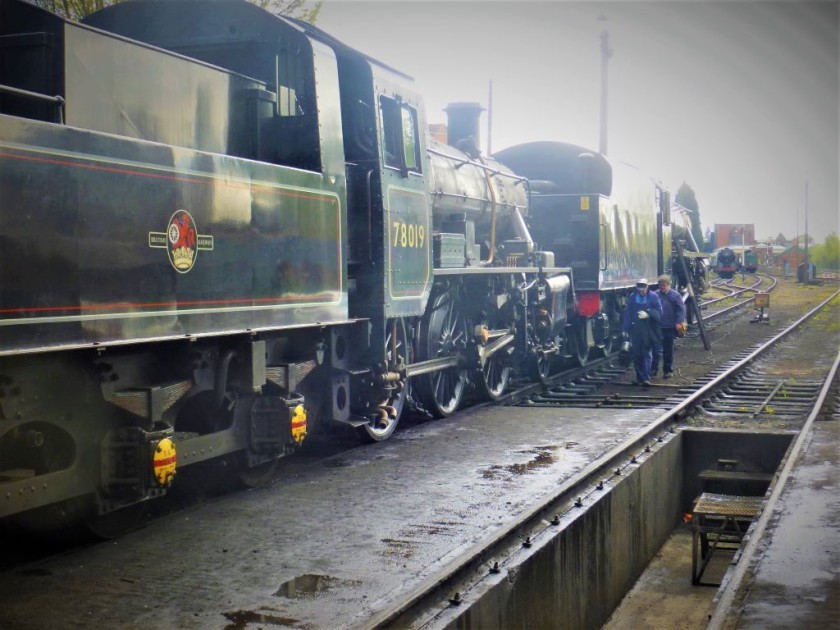
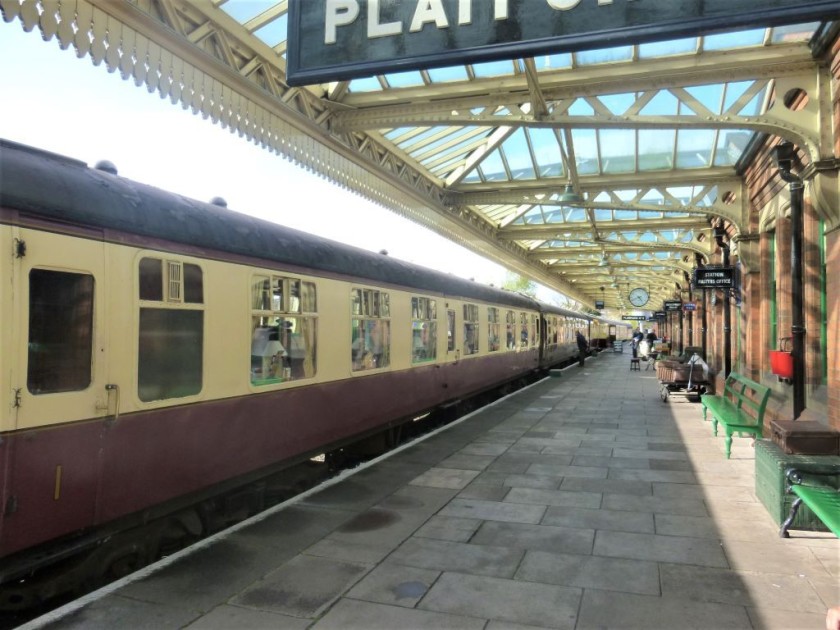
When Britain’s last steam mainline, the Great Central, was constructed it built its own separate stations in the towns and cities that it served.
Hence today, you can still take a train to the section of the Great Central that has been preserved, but you need to walk for around 20 minutes through the streets of Loughborough to reach its station from the town’s other station, where the regular trains which serve the town still depart and arrive.
Those with a love of steam railways will have their efforts rewarded, by their idea of nirvana, because this is the railway to visit if the engines and the trains matter more to you than the journey.
Visitors who want to take in a scenic train ride are catered for by the pauses the trains make on Swithland Viaduct, the preserved section of the railway’s one beauty spot, but aside from that opportunity to take in the view, the Great Central’s volunteers strive to operate the railway as it would have been back in the 1950s.
An illusion helped by the fact that it is the only preserved mainline in Britain, so the railway is double-tracked.
So it’s possible to catch a train from the intermediate stations at Rothley or Quorn & Woodhouse with the entire experience being how things would have been in around 1956.
The Great Central station at Loughborough has also been beautifully preserved, without being overly touched up, its entrance is fabulously mundane, which helps add to the aura of having gone there to catch the 12:53 express to Sheffield.
But it’s the path which leads from the station to the engine shed which holds most appeal to those who have come to see the trains.
Because at this railway, its entire engine and train collection can be admired up close in all of its glory.
How to get there by train:
The national rail station in Loughborough has frequent trains (typically at least one per hour) to and from Derby, Sheffield, Leicester, Nottingham and London St Pancras.
The journey from London will take around 1hr 20mins and it's a route on which you can save by booking Advance tickets.
Isle Of Wight steam railway
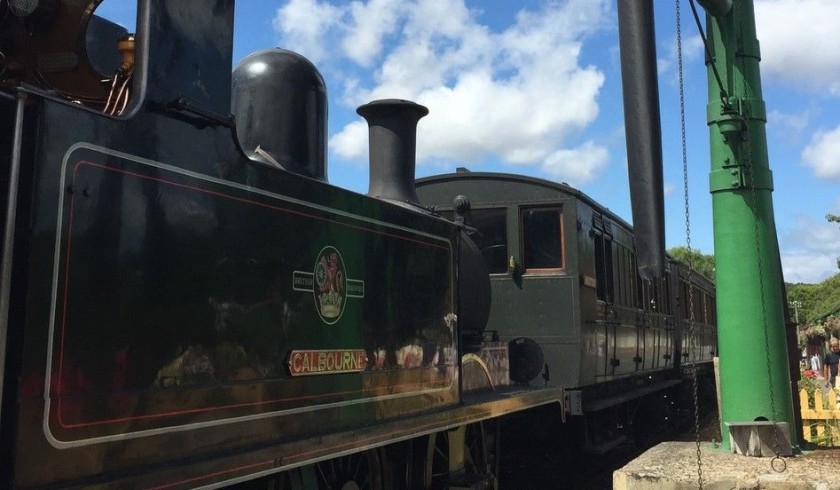
The railways on this island off England’s South Coast have always seemed to be wonderfully strange and romantic.
Since the end of the steam era, trains which used to operate on London’s Underground have provided the regular service on the remaining route, of what once a network of lines that crossed the island; all of which also happens to be an Area of Outstanding Natural Beauty.
The route from Ryde to Shanklin, which still has the regular service, used to diverge from the route between Ryde and Cowes via Wooton at Smallbrook Junction.
Those trains between Ryde and Shanklin stop at a station which has been opened here, so that they can connect with the services which operate over the Isle of Wight Steam Railway.
Because the section of the route between Smallbrook and Wooton has been immaculately preserved.
The other romantic aspect of the island’s railways was that because of the separation from the mainland they escaped modernization, so the steam locomotives on the island clung on to near the end of the era of British Railways steam.
Therefore in the 1960s, the island was the place to come if you wanted to see how the railways had been operated in the 1920s, because its engines and coaches had been frozen in time.
Core to the railway's current operations is recreating those steam days on the island, so most of the engines and coaches visitors experience today are more than 100 years old.
Getting there by train (and ferry):
The trains which travel on the regular railway, the Ryde - Brading - Sandown - Shanklin Island Line route, also stop at a station called Smallbrook Junction when connections with the Isle Of Wight Steam Railway are available; in other words on the days when the IOW Railway is operating trains.
Travelling to Smallbrook Junction by a combination of train and ferry, or train and hovercraft makes for a wonderfully eccentric day out, particularly as the trains on the Island Line used to operate on the London Underground.
The ferries over to Ryde depart from a pier at Portsmouth Harbour station, and Portsmouth has regular trains from Southampton, Brighton and London Waterloo; a day trip from London to the Isle Of Wight Steam Railway is possible.
The Mid-Hants Railway aka The Watercress Line
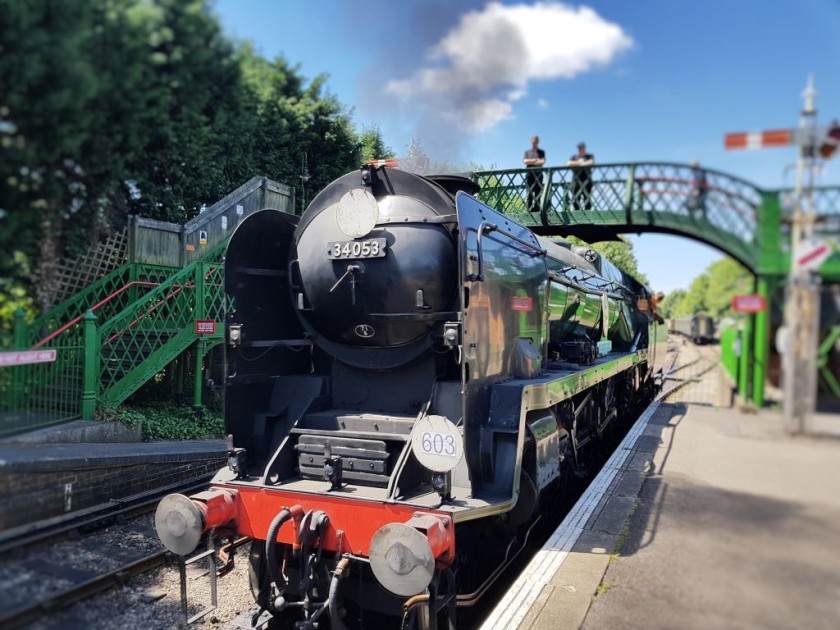
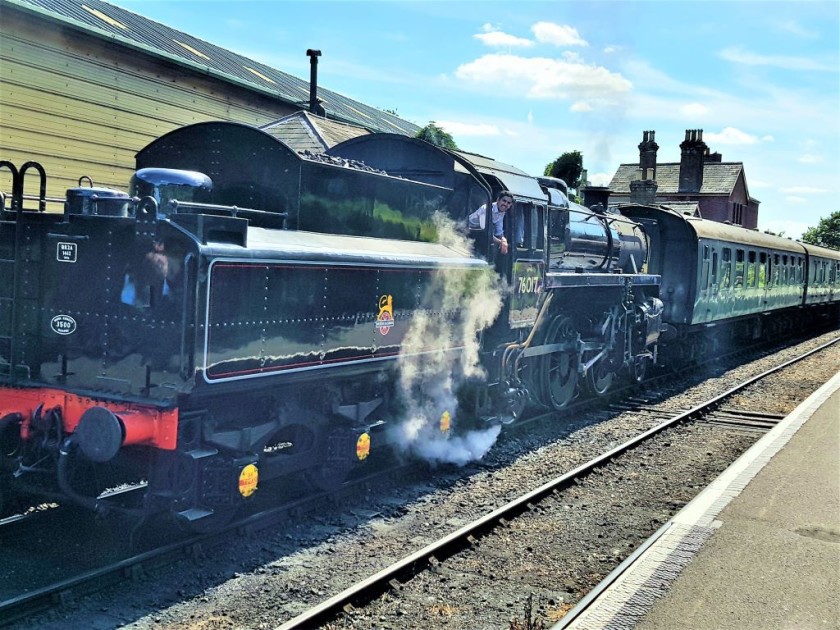
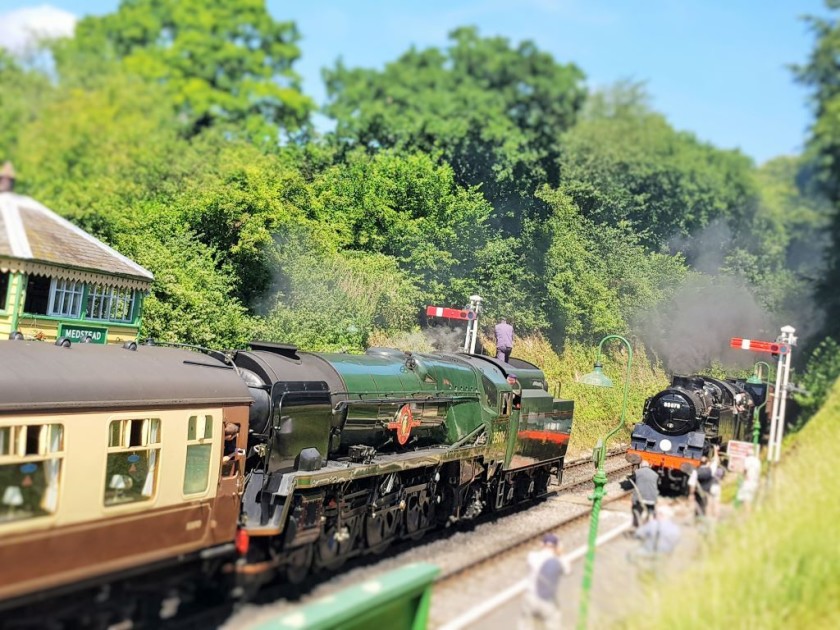
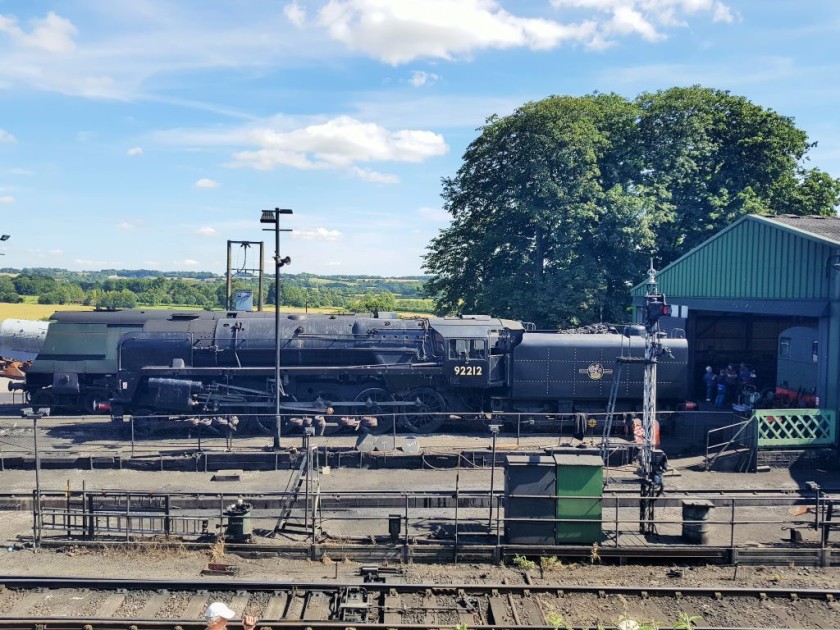
The final main line route regularly taken by British steam engines was that between London and Bournemouth and the trains on that route were sometimes diverted over this Watercress Line.
Hence many of the engines that can be found here were those once operated by the Southern Railway, which gives this line its aura of authenticity, many of the trains which travel along it today also came this way in regular service more than 50 years ago.
But for those who don’t want to ponder such things, the chief attraction is the gorgeous rolling countryside that the railway penetrates.
This is one of the highest railways in southern England and its inclines mean that the engines have to puff hard, sending clouds of steam shooting into the atmosphere.
The Mid-Hants Railway also works had to offer visitors more than the opportunity to ride the trains, Arlesford station is home to a museum and at Ropley station there are opportunities to wander around the grime of the steam engine shed and get close to the engines.
How to get there by train:
Alton station is shared between National Rail and the Mid-Hants Railway; there is a gate between them, half way along the platform that the trains from London Waterloo arrive at.
Those trains from London depart once or twice per hour and the journey to Alton takes around 1hr 15mins.
The North Norfolk Railway aka The Poppy Line
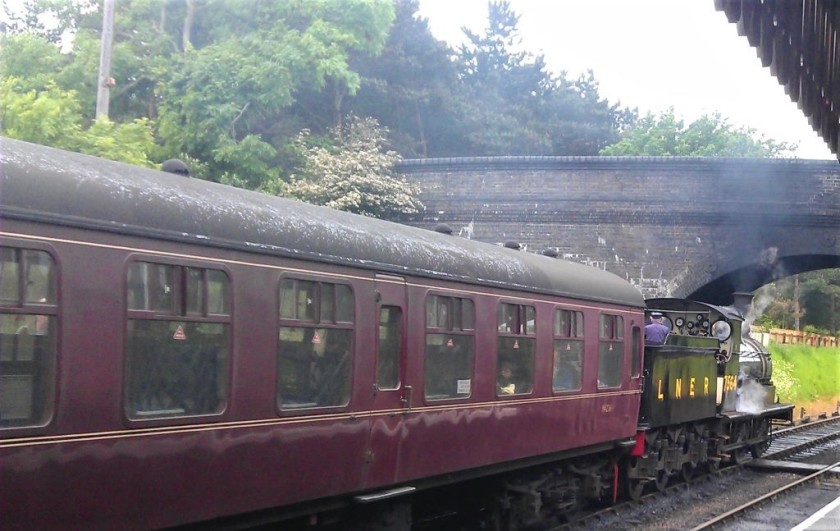

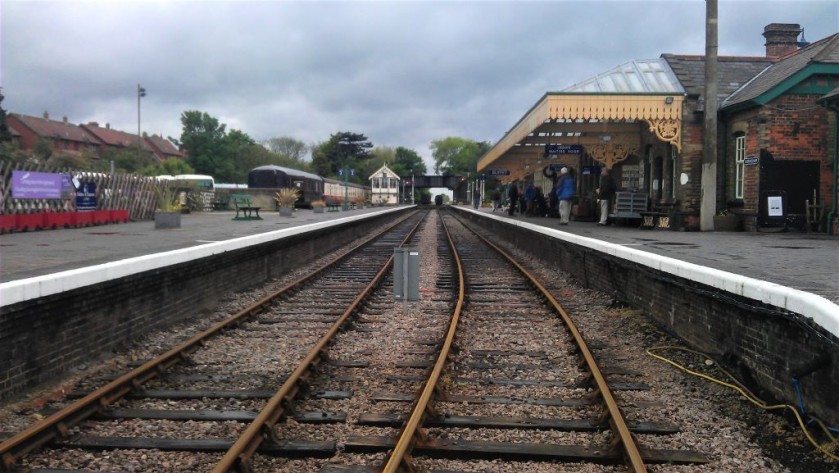
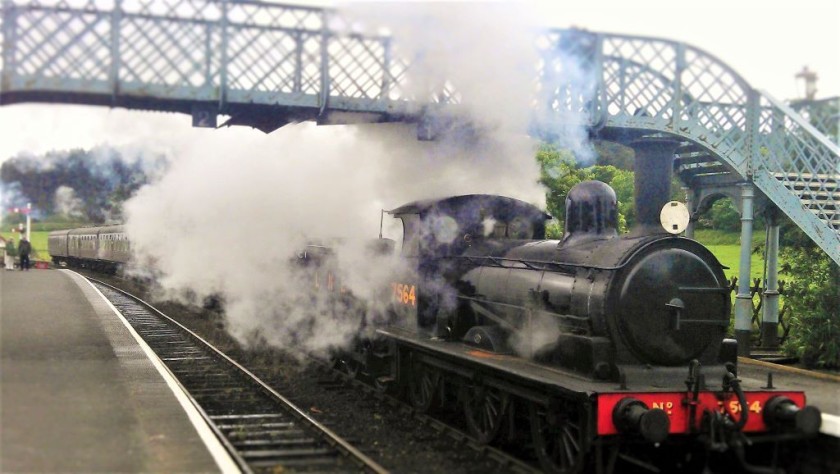
The regular trains to Sheringham use a fairly basic station that has the aura of a bus stop.
Until 1967 they arrived and departed from a beautiful railway station across the street, but it was closed as part of the economic measures, which scoured Britain’s railway system in the 1960s.
But in common with large numbers of once closed lovely corners of Britain’s railways, volunteers decided that Sheringham station and the line westwards along the Norfolk coast were worth saving.
Their Herculean efforts can be appreciated today, because the station in Sheringham is now used by the North Norfolk Railway and it is a gem.
And as it’s across the road from the modern ‘station’ this railway has exceptionally easy access by train.
The sea views from trains are also charming, as is the 1950s bus which connects Holt’s station to its town.
But steam train fans should be aware that the only opportunities to get close to the engines away from the stations, are when special Behind The Scenes tours are organised.
How to get there by train:
That national rail station in Sherringham, mentioned above, is served by hourly trains from Cromer and Norwich; it has regular trains from Cambridge, Ipswich and London.
The North Yorkshire Moors Railway aka The NYMR
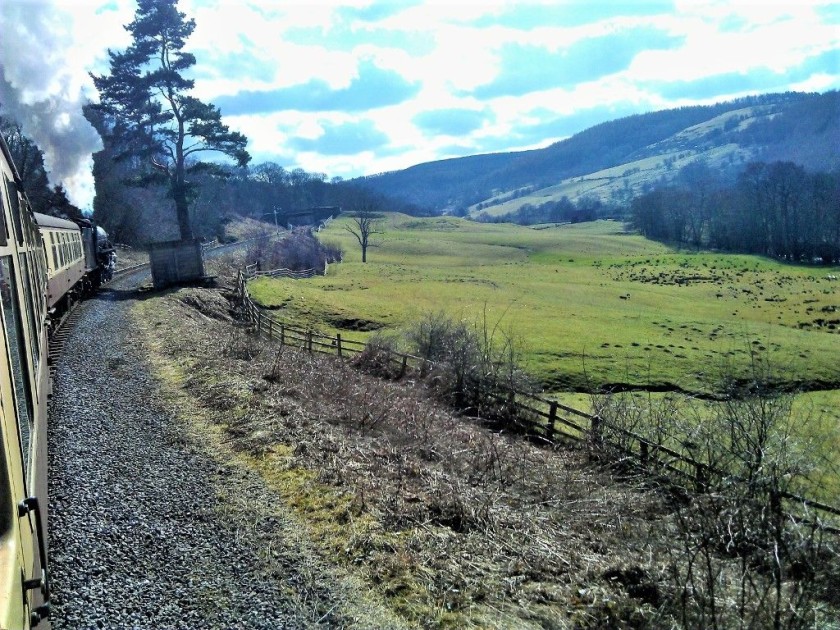
The wonderfully beautiful North Yorkshire Moors national park has been fortunate to retain two railway lines, both of which offer some of the most stunning views which can be appreciated on British railway journeys.
The Esk Valley Line is used by conventional mainline trains and it links Middlesbrough to the coastal town of Whitby; where Count Dracula came ashore when he reached England.
The North Yorksire Moors Railway (the NYMR) is a stunning heritage railway which mainly uses steam locomotives.
The two railways share the same stretch of railway track between Grosmont station and Whitby, so connections between the two railway lines are available at Grosmont.
If you want to experience powerful steam engines working hard to haul trains across dramatic landscapes then the NYMR is a must.
Around Grosmont station the sheds which house the locomotives are generally open to the public and Harry Potter fans can see the station used as the location for Hogsmeade at Goathland station.
Getting there by train:
Middlesbrough has direct trains from Leeds, Newcastle and York, so if you set off from any of these cities at around 09:00, it’s possible connect there in order to travel into the national park on the Esk Valley Line to Grosmont and then spend an afternoon riding the steam trains (the NYMR has more frequent trains at weekends).
Though the timetables need to be checked with care as the Esk Valley line services are a tad sparse.
Another option is to access the NYMR from Leeds and York by taking the train to Malton station, from where Coastliner buses on the 840 route can take you on to Pickering, where the stream trains can be boarded.
The bus stop in Maldon is right by the train station and in Pickering it will be a 10 minute walk to the railway.
Severn Valley Railway
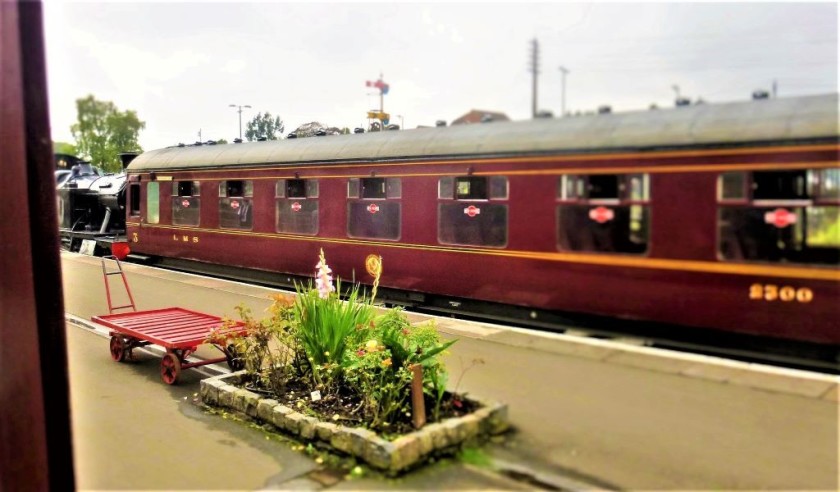
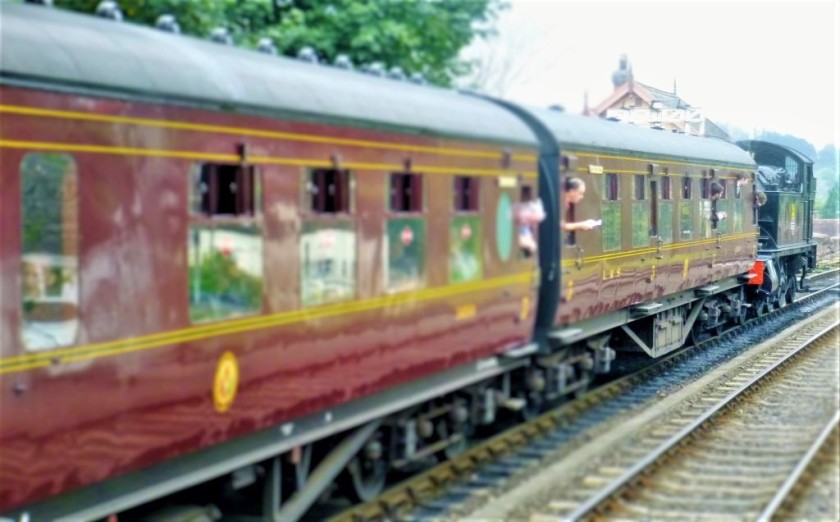
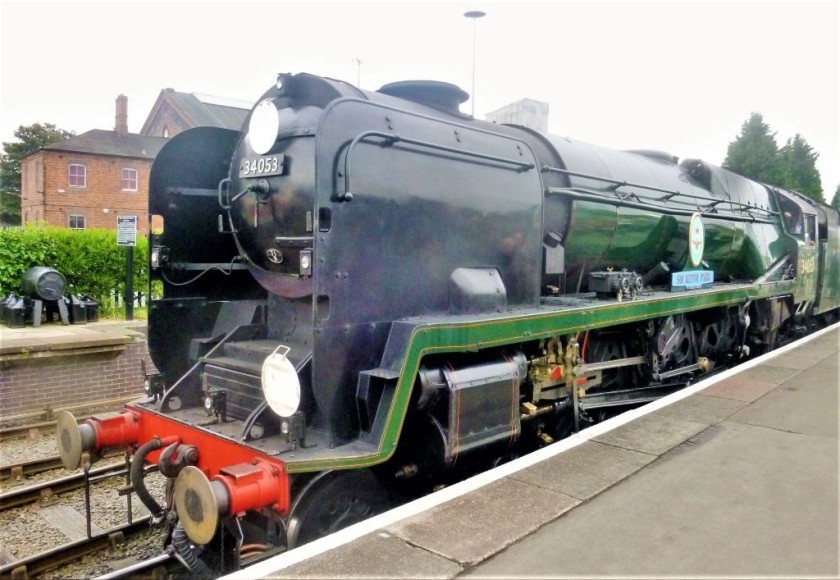
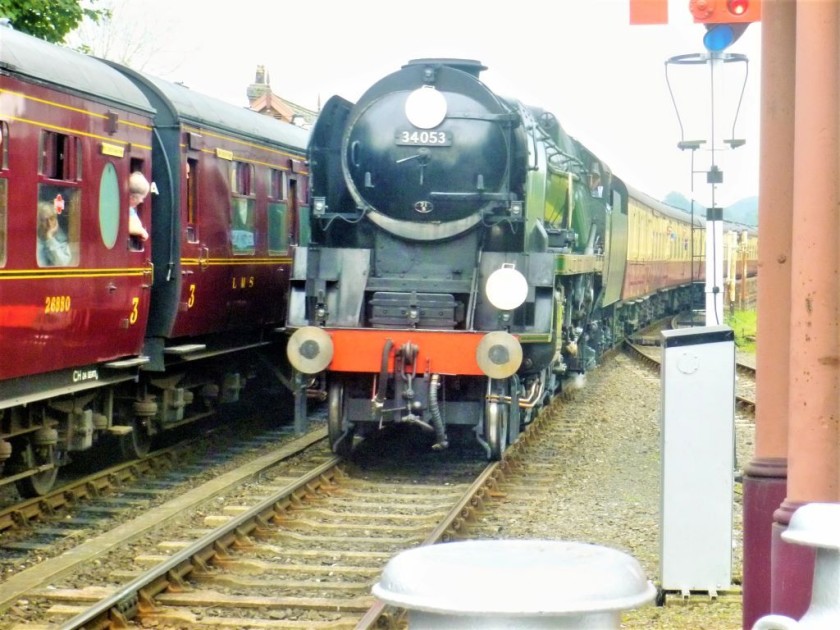
There’s a lot to love about the Severn Valley Railway, most of the trains are typically pulled by large powerful locomotives and the route live lives up to its name with an utterly charming riverside location.
A splendid idea on a sunny afternoon is to watch the trains go by from the Severn Way footpath, which is along the river bank between Arley and Highley stations.
There are also plenty of other activities to do between riding the trains, the large station at Bewdley is a lovely location to watch the trains go by and Bridgnorth station has easy access to a charming town centre.
The best means of accessing the town at Bridgnorth is to use the footbridge outside the station entrance, turn right and walk down to the riverside until you come to the sign on the left, for the cliff railway.
The line’s railway shed for its working engines can be seen from the footbridge at Bridgnorth station, but there are opportunities to get up close to the trains at the special exhibition centre at Highley station.
How to get there by train:
Kidderminster's national rail station has two or three trains per hour on Mondays to Saturdays from Birmingham Moor Street and Birmingham Snow Hill and these trains also serve Stratford-upon-Avon and Worcester.
On Sundays there are hourly trains between Kidderminster and these other stations.
These trains to and from Kidderminster also call at Smethwick Galton Bridge station, where connections are available with trains to and from Birmingham New Street, Coventry, Crewe, Liverpool, Stafford and Wolverhampton.
It's possible to make a day trip from London by taking trains on the Marylebone to Birmingham Snow Hill route operated by Chiltern Railways and connecting in Birmingham.
Strathspey Railway
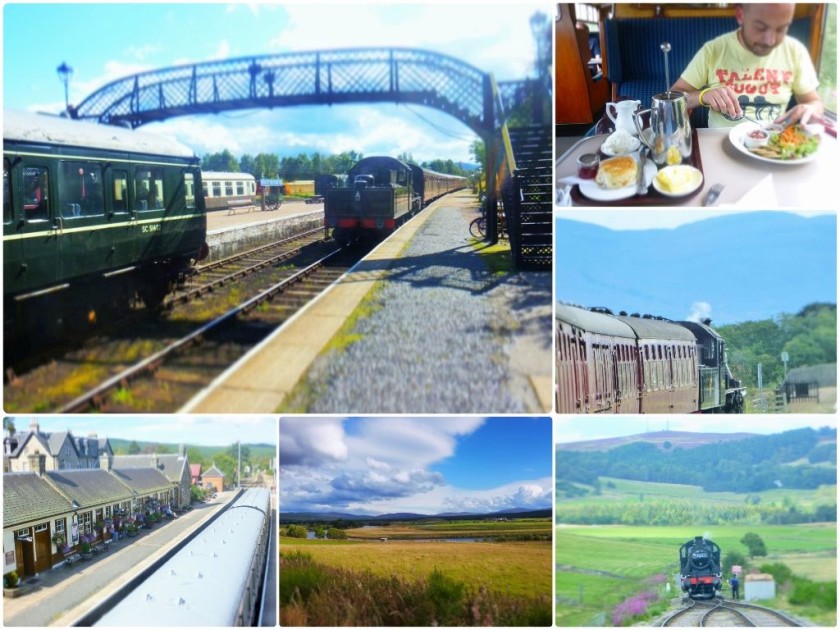
The Highland Main line lives up to its name and traverses some stunning scenery, but steam trains rarely travel along its length.
When they did so until 1965, some of those trains diverted off the direct route at Aviemore to take an inevitably beautiful railway line towards Forres.
Today Aviemore is still a junction station because the section of that route to Forres, as far as Broomhill, is now the Strathspey Railway.
So if you want to experience wonderful Highland scenery while travelling on a steam train, the Strathspey is an alternative to The Jacobite, which you won’t need to book in advance to experience.
Also what don’t need to be booked ahead are the cream teas that are available on the afternoon journeys.
When I travelled this line the cream teas were an unknown pleasure, so we were offered one just after a lunch in delightful Boat Of Garten station.
As you can see, despite not being remotely hungry, we couldn’t quite manage to say, “no, thank you”.
The Worth ValleyRaillway
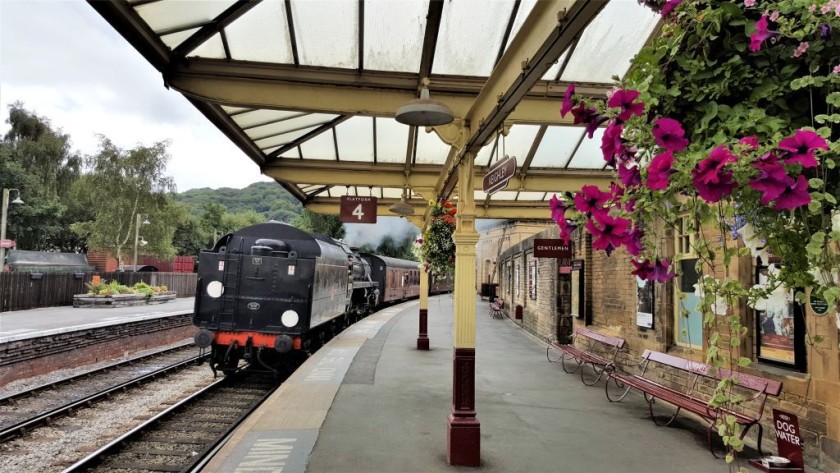
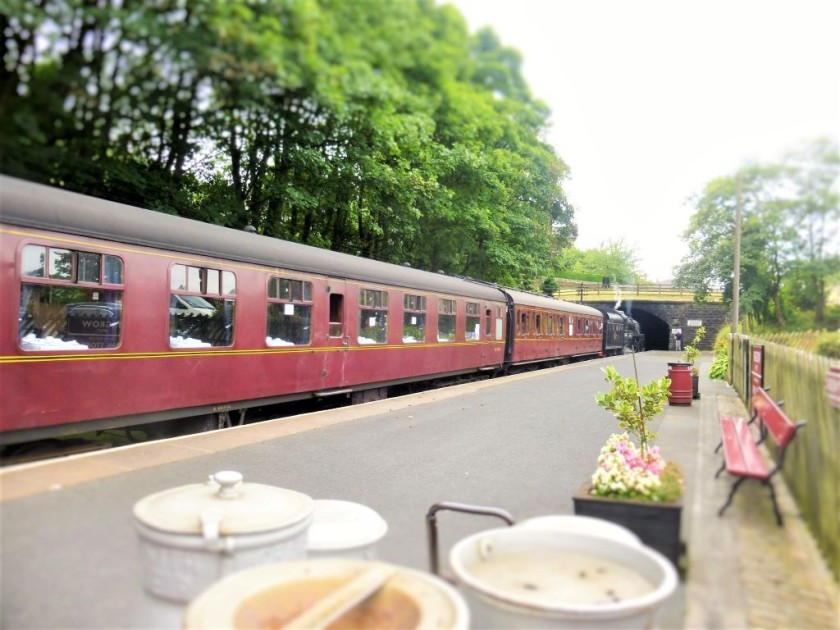
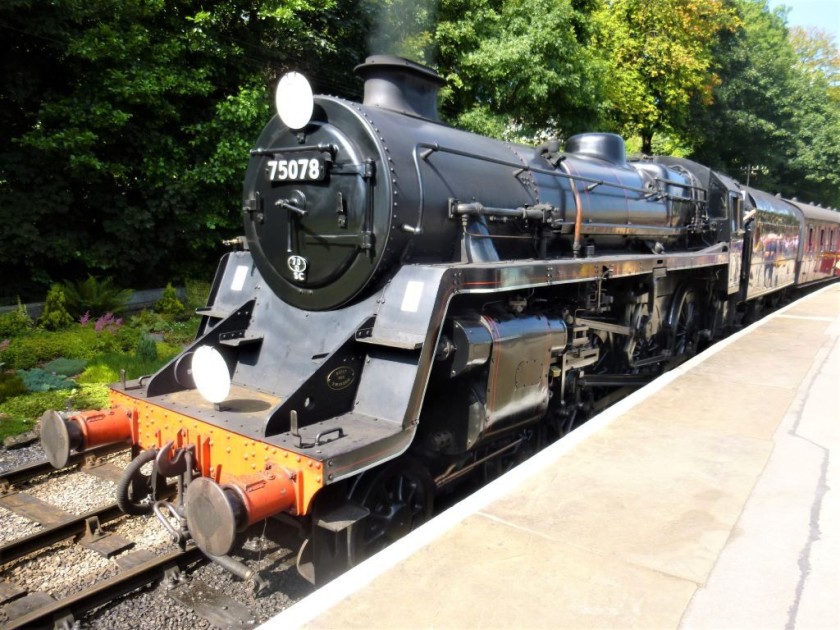
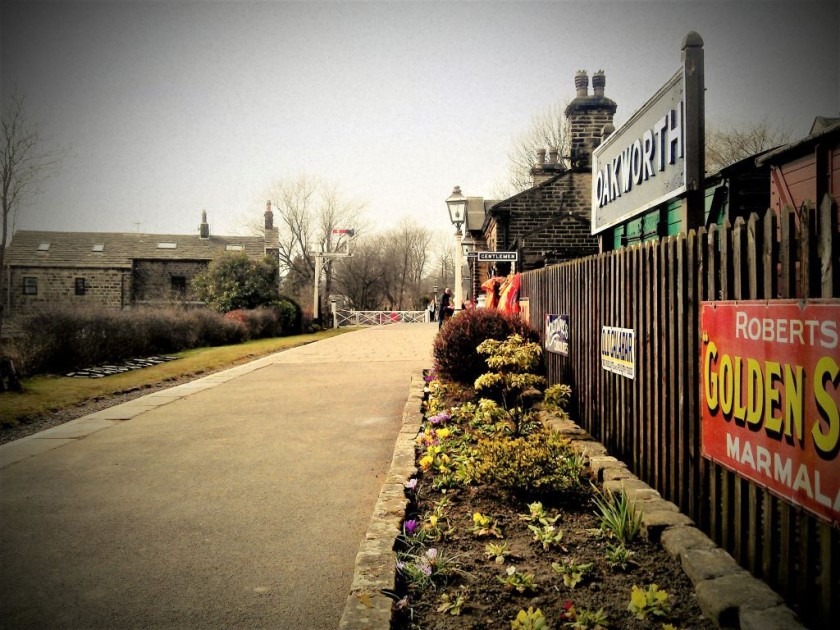
The first film I was taken to see as a child was The Railway Children and it still enchants me to this day as much as it did then.
The fact that the children could run across a field by their home to watch the steam trains go by seared into my imagination, because from my grandparent’s bedroom window I could also see a railway line on the other side of a playing field.
So I started to sit by that window, hoping that I too would see a fire-breathing dragon pass along the railway, of course I never did, but those experiences are why I’m writing this article, on a website I’ve created, dedicated to travel by train.
Miraculously it’s possible to visit, Oakworth, the station featured in the film made 50 years ago, and discover that it’s little changed.
So for me and everyone who has grown up with this film, the Worth Valley Railway. is the ultimate nostalgia fest.
For anyone else, what’s good to know is the railway skirts the Yorkshire Dales are of Outstanding Natural Beauty, so the journey is largely lovely.
Plus one of its stations serves the village of Haworth, home of The Bronte Sisters, though the parsonage, in which they resided and now houses a museum dedicated to the writers, is a steep climb from the railway.
So it’s a railway which much to enchant those who don’t have a passion for the steam engines, but for those that do, the Keighley & Worth Valley offers much to enjoy.
There are exhibitions housing preserved engines and trains at both Oxenhope and Ingrow (West) stations and on many days it’s possible to have a tour of the line’s working engine shed at Haworth.
Getting there by train:
Keighley's national rail station has two or three trains per hour from Leeds and an hourly train from Bradford Forster Square.
The Worth Valley is therefore easily experienced as a day out by train from Leeds and Manchester; when travelling to and from Manchester either connect in Leeds station, or by travelling via Bradford, walking between the Interchange and Forster Square stations in the city.
Leeds has frequent trains to and from a swathe of other destinations including Hull, Sheffield and York.
Steam trains on the main lines:
Those preserved steam railways offer journeys only on their section of lines cut off from the main UK railway network.
However, several companies offer long-distance day-long excursions on trains pulled by steam engines, which travel along Britain’s most scenic main line railways.
A key difference with taking the trains along the preserved railways is that journeys by these mainline trains always require advance booking.
As a result services typically sell out completely weeks in advance and some departures can sell out months ahead of the travel date.
All of the companies listed below offer fine dining experiencing on their trains, on which three course meals are served in on board restaurants, but non-dining seats are also available.
Travelling on Belmond trains
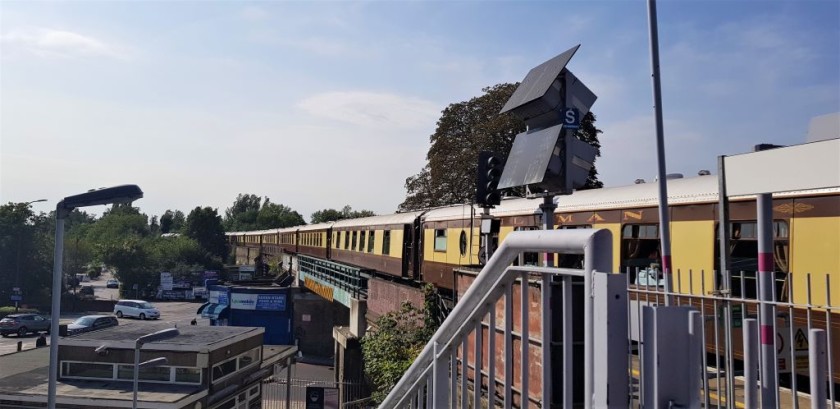
Belmond specializes in luxury dining experiences served on board pullman coaches of the type that were once used on the likes of The Golden Arrow and The Queen Of Scots.
The trains operate on return trips from Victoria station in London to different picturesque locations across southern England; though not all of its trips are hauled by steam engines.
Steam Dreams
Steam Dreams lives up to its name by operating a series of journeys behind steam engines.
One of its specialisms is day trips from London to cathedral cities in southern England, but it also regularly offers trips to the likes of Bath and Windsor.
West Coast Railways
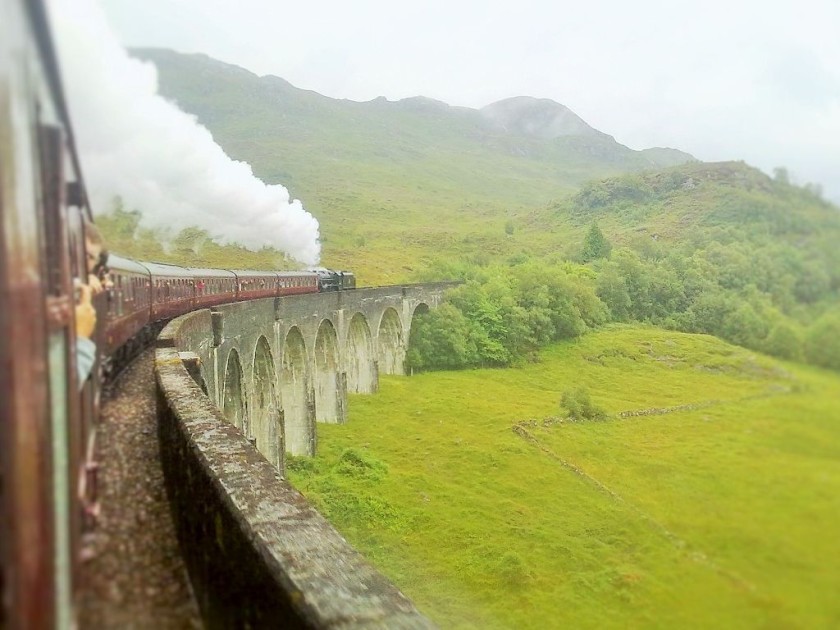
West Coast Railways specialism is operating services at daily or weekly intervals from cities and towns in northern England and Scotland, which then travel over some of Britain’s most scenic railway routes.
It’s four core services are:
(1) The Jacobite, which operates daily in the summer season over the West Highland Line, between Fort William and Mallaig (the route to Hogwart’s Castle)
(2) The Dalesman services which travel the length of England’s most scenic route, the Settle & Carlisle line.
And its departures to and from Chester also travel over the most beautiful section of the West Coast Line between Carlisle and Lancaster.
Stations at which these Dalesman trains can be boarded include Chester, Leeds, York and Preston.
(3) The Pendle Dalesman which is entirely steam-hauled on its return journey between Lancaster and Carlisle, which traverses the Settle & Carlisle route.
(4) The Scarborough Spa Express, which also offers the opportunity to experience one of England’s most charming seaside resorts.
Saphos Trains
Saphos Trains offers multiple steam hauled trips throughout the year which depart from a variety of locations, mainly in southern and western England; it's day long excursions don't leave from London.
It's popular destinations include its 'English Riviera' trips, which use The Dartmouth Railway (see above); and the likes of The Welsh Marches and it's another company which uses steam power to travel the length of England's most beautiful railway, the Settle And Carlisle line.
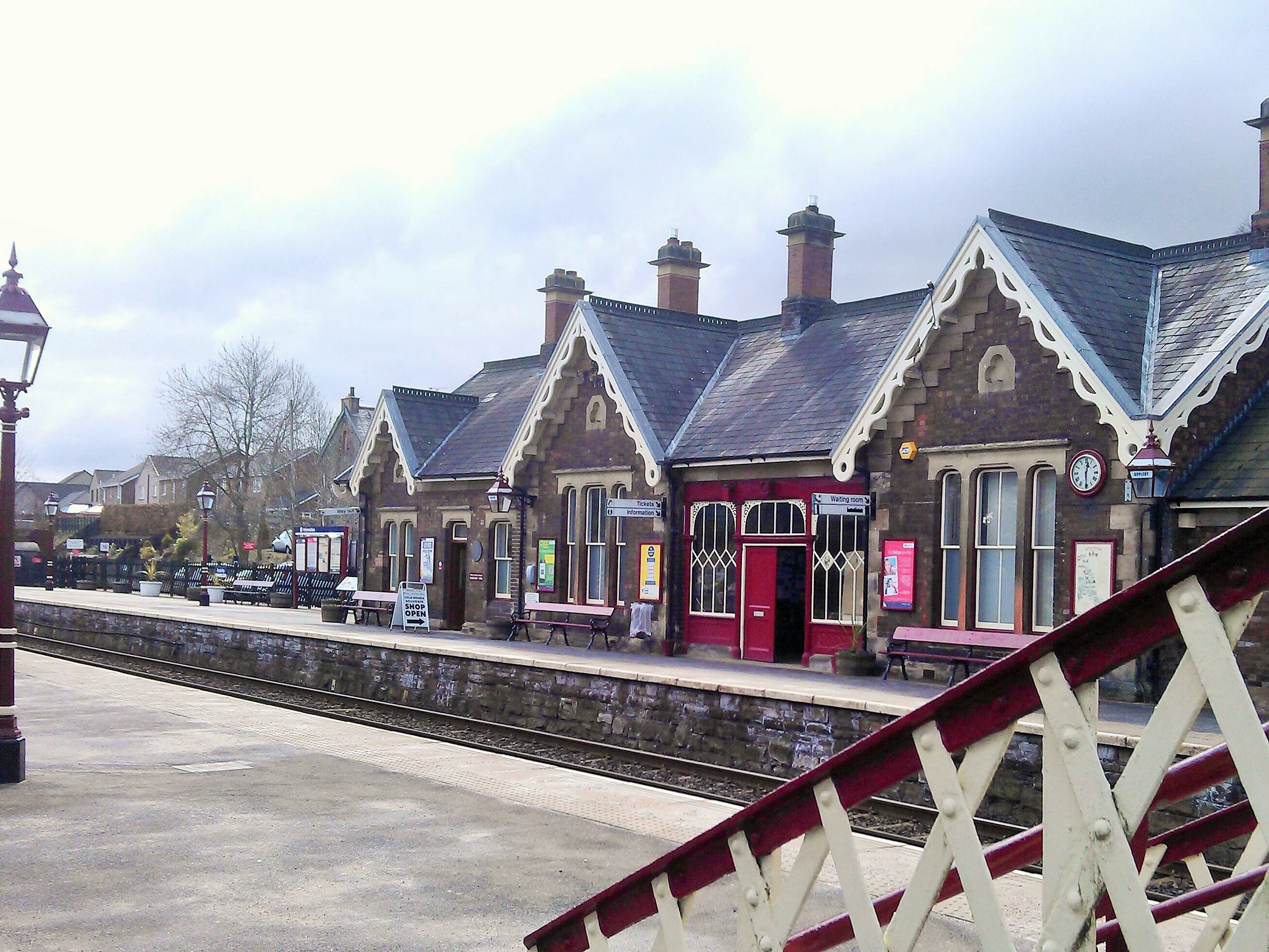
A steam railway holiday
If you want to combine rides behind as many steam engines as possible on a dream holiday, then its best to plan your visit around the summer season when the most popular preserved railways are operating trains 7 days per week.
Leeds or York are particularly good bases for the days out by steam, as both cities offer opportunities to board The Dalesman and The Scarborough Spa Express services.
Also from both cities the preserved railways which are accessible on day trips by train are
- the East Lancashire Railway (connect for the trams at Manchester Victoria station),
- the Grand Central (with a change of trains in Sheffield),
- Keighley & Worth Valley (direct trains from Leeds),
- Severn Valley (take trains to Birmingham New Street and then transfer to Moor Street station for a train to Kidderminster),
- North Yorkshire Moors Railway (connect in Middlesbrough for trains to Grosmont).
The Great Little Trains of Wales
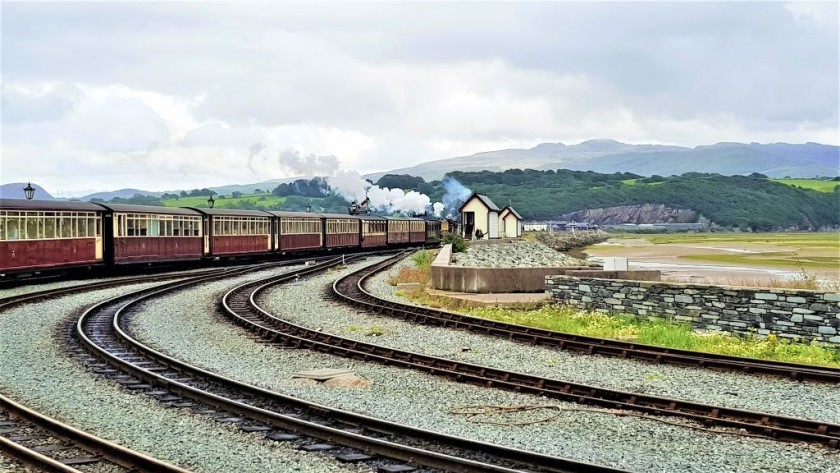
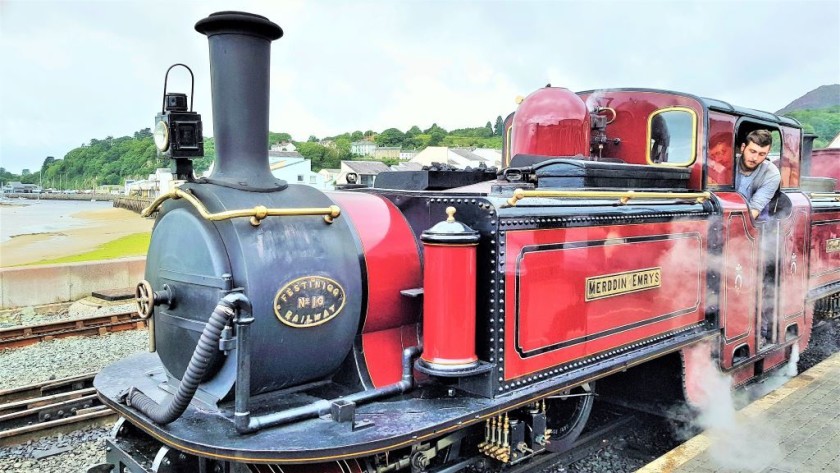
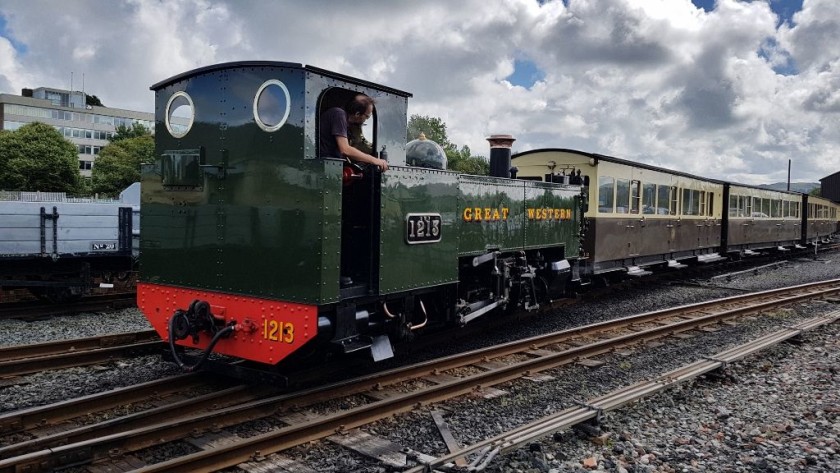
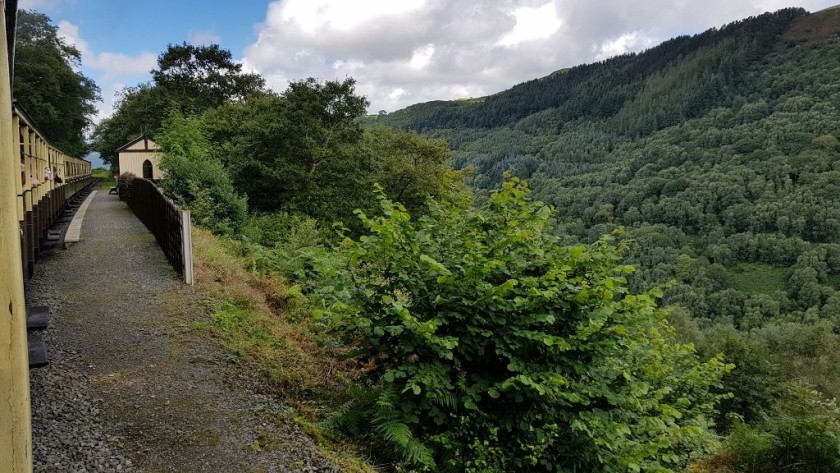
The other railways on this guide are where you can easily behind the steam engines, which were built for use on Britain's mainline railways, but in Wales smaller railways were used to either take slate down to the sea from quarries, or take pleasure seekers to beauty spots.
Many of these utterly delightful railways have been saved by volunteers and now their sole purpose is to enchant travellers.
Some of them can be easily accessed by the current mainline railway, so you don't need a car to explore the corner of Wales, in which they can be found, by train.
The Ffestiniog Railway is blessed with rail interchanges at either end of its route, at Blaenau Ffestiniog station (trains from Llandudno and Llandudno Junction) and at Minffordd (trains from Barmouth and Machynlleth).
So it forms the rail link between the North Wales and Cambrian coasts when touring Wales by train.
The Ffestiniog's station in Porthmadog, which it shares with the Welsh Highland Railway is also a 10-20 minute flat walk to and from the town's main line railway station.
Further along the Cambrian line, its station at Tywyn is a short walk to and from the Tywyn Wharf station of the lovely Talyllyn Railway.
The southern branch of the Cambrian line goes to Aberystwyth, where its station is a five minute walk from the station in the town used by the glorious Vale of Rheidol Railway.

Simon Harper
I wanted to share my passion for train travel and explain how anyone can take the fantastic journeys I have taken.

This is one of more than 100 train travel guides available on ShowMeTheJourney, which will make it easier to take the train journeys you want or need to make. As always, all images were captured on trips taken by ShowMeTheJourney.
This second version of ShowMeTheJourney is exciting and new, so we are genuinely thrilled that you are here and reading this, but we also need your help.
We’re striving not to let anything get in the way of providing the most useful service possible, hence a facility has been set up with DonorBox which can be used to support the running costs and make improvements.
Instead of advertising or paywalls, your financial support will make a positive difference to delivering an enhanced service, as there’s a lot of ideas which we want to make happen.
So if you have found the info provided here to be useful, please consider saying thank you.






